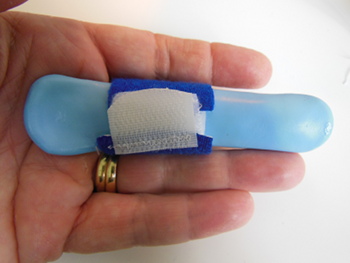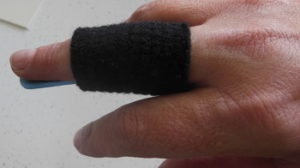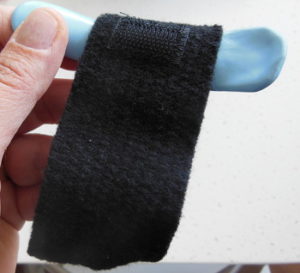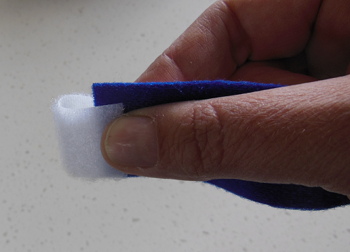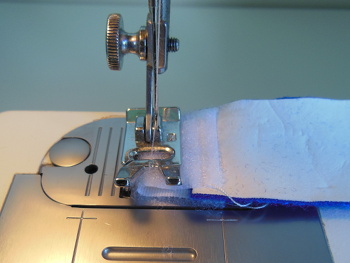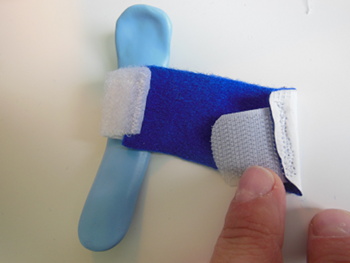My favourite thermoplastic material to use for finger gutter splints is Polyform. I usually use the 3mm think (non-perforated) material and thin it slightly when it is warm. You can of course use other materials as well, but what I like about the Polyform is that it conforms so well and you get really nice edges.
Make it long enough so the proximal end of the splint lands just distally to the DPC. That way it is as long as possible, allowing optimal leverage, without restricting MCP joint movement, and it will be more comfortable to wear.
When shaping the splint, check the length of the finger, and then do as much of the shaping as possible “in the air”, making it slightly straighter than the current PIP joint position. Go back to the patients finger to check the splint several times as it hardens to make sure it still fits.
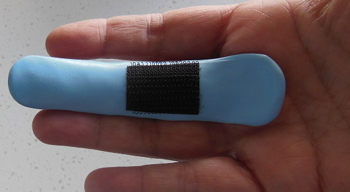
Mark out the centre of the PIP joint on the splint and place the self adhesive hook velcro at the back, approximately 2/3 proximally to the PIP joint.
Make the splint a few degrees straighter than the current joint position and then adjust it regularly (or even show the patient how to do it themselves). The polyform is easy to adjust by giving it a bend just proximally to the PIP joint. You don’t have to heat it up, just use your fingers. Easy!
Little fingers can be a bit more tricky to splint as the finger splint has a tendency to twist around the little finger. To help prevent this you might want to consider making the little finger splint with a palmar bar.
In regards to strapping, I have two favourites. If there is a lot of swelling of the PIP joint i like to use the Mafra/Durawrap. It conforms nicely around the joint and helps reduce any swelling.
I usually sew on a piece of hook velcro to one end of the Mafra to allow more space to attach. Once you have the right tightness of the Mafra, the patient does not have to undo it, but can slide in to the splint, like a slipper. Just make sure they put the strap far back towards the base of the finger. The splint will stay on better that way and it seems to be a more efficient angle for the strap to do its job to help straighten the PIP joint.
An other option for strapping is to use Fabrifoam. The advantage with using Fabrifoam is, due to its foam backing, it has less of a tendency to migrate. And because it is elastic, you also get some of that compression to help reduce swelling. The only downside with the Fabrifoam is that it requires more sewing. The Fabrifoam piece needs to be measured quite accurately so that you can attach a folded piece of loop velcro on once side and a piece of hook velcro on the other side.

